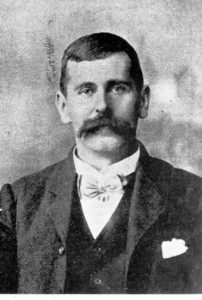
Walter Roth proved to be a conscientious man though not without some controversy, and a man of his times. He arrived in British Guiana in 1907 as medical officer and government stipendiary magistrate, with the title Protector of Indians of the Pomeroon, North West district, having left Queensland, Australia in 1906 where he was first given the title Northern Protector of Aborigines in 1898 and later Chief Protector up to 1906.
It was in Australia that Roth first came in for some criticism, facing increasing hostility from white settlers for his work among the aborigines, and from his peers for his seemingly unorthodox research methods in the name of science. He would then move to British Guiana to become one of the pioneering ethnologists in the country at the time.
Born Walter Edmund Roth on April 2, 1861, he was one of nine children: seven sons and two daughters, of Hungarian-born Dr Matthias Roth and his English wife Anna Maria Roth nee Collins.
The Roth sons were well educated: attending school in London, and French and German boarding schools; learning several languages before moving on to university where Walter studied biology at Oxford. He later began medical training after graduating in 1884 then enrolled in law school in 1886 while still in medical school.
In 1887 he put his studies on hold and moved to Australia where he worked in several different fields including teaching, before returning to London to complete medical school in 1891-92. After graduating he worked for a while in a medical partnership in a small New South Wales town and seemingly settled down to write scholarly articles on a range of subjects.
However, that quiet routine did not satisfy Roth and he soon accepted the Queensland, Australia post just after an 1893-94 stint as a ship’s doctor. After 12 years working in Australia, he resigned on June 10, 1906 and later arrived in British Guiana to begin working in what has been described as the “mosquito-cursed district of the Pomeroon”.
It was here that Roth became keenly involved in recording the cultural traditions and customs of the Guiana indigenous Indians. With much experience from documenting Australian aborigines’ languages, his transcriptions “An Inquiry in the Animism and Folklore” in British Guiana has today earned him much academic regard.
According to Janette Bulkan, writing in the introduction of the Guyana Classics Library’s 2010 publication of Roth’s 1915 “The Animism and Folklore of the Guiana Indians”, Roth ranked indigenous belief systems as inferior to those of the Indo-European world, which is evident from his text.
Roth was not the only European to think this way at the time, and was part of a wider Eurocentric point of view that permeates much research even today. His dedication to reporting these systems however, remains among the few detailed researches on indigenous life we know of in the world today.
Walter Roth was married in 1887 to Ada Toulmin whom it is believed he left just a few weeks after their wedding to move to Australia.
According to Appendix W of the Toulmin family website, Roth, then 26 and Ada, a widow at 40, married on Aug 2, 1887 but he later arrived in Australia accompanied by a nurse called Eva Grant who bore him a daughter and a son who both died in childhood.
Then in 1893 he is believed to have married Edith Humpherson with whom he had three sons who survived him.
Walter Roth resigned in 1928 and became government archivist and the curator of the Georgetown Museum. He died in Georgetown, British Guiana on April 5, 1933, just three days after his 72nd birthday.
The Walter Roth Museum of Anthropology and Art History was founded in 1974 from the collections of the late Guyanese archaeologist Denis Williams and named in Roth’s honour. It was renamed the Walter Roth Museum of Anthropology in 1980. (Guyana Times Sunday Magazine)



